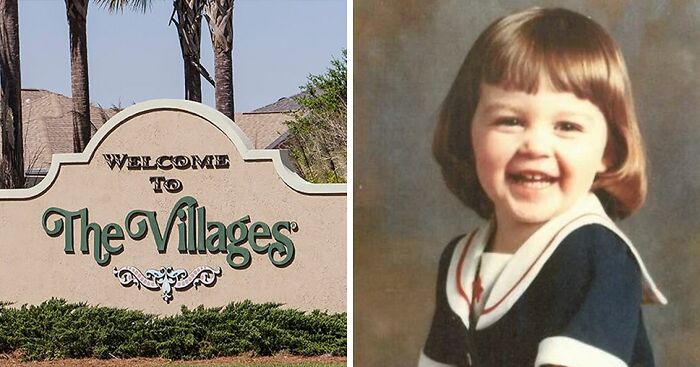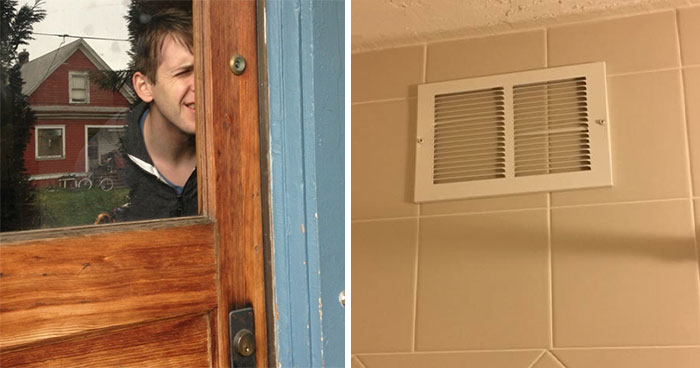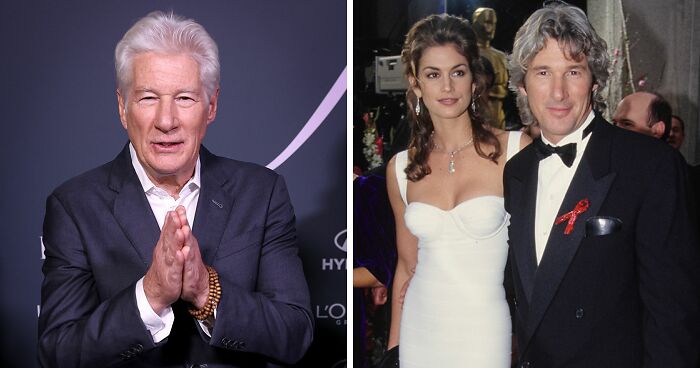
Man Reacts To Witnessing A Woman Being Catcalled Multiple Times In Just 5 Minutes By Sharing His Take Online And It Goes Viral
Interview With Author“Just be quiet and let her go where she’s going.” That’s the advice that Rafi D’Angelo from Harlem gave men on his ‘So Let’s Talk About’ page after explaining how he heard a woman getting catcalled 3 times in just 5 minutes while walking in the same direction as her. Scroll down to read D’Angelo’s story in his own words.
D’Angelo explained to Bored Panda that he got some feedback from women who were angry about him not speaking up and stopping the catcalls while conducting his social experiment. “And I think it’s important to be aware of the situation and your surroundings and think about what the next step would be. If you’re with your friends and they’re catcalling women, call them out on it. You’re friends. You have a prior relationship. They’re more likely to listen to you,” he said.
“You don’t tell a perfect stranger, a grown man who is already showing the world he doesn’t care what anyone thinks of him by dint of the fact that he’s calling out to a strange woman, to correct their behavior unless you are protecting someone else from a violent situation,” he stressed. “I’m not going to tell a grown man how to act unless a woman is in danger because then I’ve escalated a situation to a point where he might want to fight, and for no reason. The interaction between him and her would’ve been over, but I’ve interjected an opinion, and made a situation worse.”
Bored Panda also reached out to Emily May, Co-Founder and Executive Director at Hollaback!, an organization that aims to end harassment in all its forms. Scroll down for our full interview with May. You can find more resources about what bystanders can do if they see street harassment right here.
More info: SoLetsTalkAbout.com | Facebook | Tumblr | Instagram | Twitter
Catcalling is something that many women (and men) have to deal with often
Image credits:FlairImages (not the actual photo)
Rafi D’Angelo shared a story about how he saw a woman get catcalled 3 times in just 5 minutes
Image credits: So Let’s Talk About
Image credits: So Let’s Talk About
Image credits: So Let’s Talk About
Image credits: So Let’s Talk About
Image credits: So Let’s Talk About
Image credits: So Let’s Talk About
“Street harassment is sexual, gender-based, and bias-motivated harassment that takes place in public spaces like the street, the supermarket, and the social media we use every day. At its core is a power dynamic that constantly reminds historically subordinated groups of our vulnerability to assault in public spaces. Street harassment can happen to anyone, but disproportionately punishes women, girls, LGBTQ+ people, and other marginalized groups for being themselves in the world,” she said.
May from Hollaback! said that street harassment is on a spectrum of gender-based violence. “Street harassment is on a spectrum of gender-based violence. At one end of the spectrum, we have examples like inappropriate gestures, staring, whistling, following, and comments about your appearance or identity,” she explained. “As we move along the spectrum we start to see more severe forms of street harassment like public exposure and groping that are illegal. We include these behaviors in how we define street harassment because they are so common, pervasive, and rarely reported to authorities.”
Catcalling is all about power
According to May, street harassment is all about power. “If street harassment were about getting dates, it would be what author Marty Langelan calls a ‘spectacularly unsuccessful strategy.’ Instead, street harassment is about ‘putting people in their place.’ Remember that it’s not your fault. And because it’s not your fault, it’s also not your responsibility to have the perfect response to street harassment. It’s their responsibility not to harass you,” she pointed out.
May explained that while everyone is vulnerable to street harassment, research indicates that people who are aware of their surroundings, walk confidently, and respond to harassment with confidence are less vulnerable.
“Nevertheless, direct confrontations with people who harass can escalate, particularly if you are alone or in an unpopulated space. While it is each individual’s right to decide when, how, and whether to respond to street harassment, it’s important to prioritize your safety and wellbeing,” she said.
There’s no ‘perfect’ response, but here’s what you can do if you’re being catcalled
According to May, there are several things you can do when harassed on the street. The first thing is trusting your instincts. You can respond to someone catcalling you because this may reduce the trauma. However, it’s also alright to do nothing. You decide how you react and you do it for you.
May also advises reclaiming your space by setting your boundaries, engaging bystanders, and documenting the situation if you feel safe. Just remember that your safety is your priority.
Lastly, practice resilience. Developing rituals that you do after being harassed can help you shake off the negative feelings and maintain confidence in yourself. Open up to your loved ones and share your story.
And this is how people reacted to D’Angelo’s post
The scene that D’Angelo described can be an unpleasant common occurrence for women (and men!). According to Business Insider, 65 percent of women and 25 percent of men in the United States reported having been on the receiving end of at least one type of street harassment in their lives. What’s more, most have reported being catcalled or harassed on the street more than once. And for some, this is an everyday occurrence.
Street harassment can have negative effects on our emotions and our minds. Targets of catcalling can feel threatened, scared, annoyed, angry, and embarrassed. All of these feelings can affect how the person’s day will go: they might be less productive at work because their mind keeps jumping back to the interaction or they might snap at their friends because they’re on edge.
While there’s probably no ‘perfect’ universal strategy on how to deal with catcallers, there are plenty of tips that women and men give on how to handle the situation (which just goes to show how widespread the problem really is).
Anita Roberts, the founder of Safeteen, told CBC that women can give street harassers “the look” that communicates to them that they don’t like what they’re doing. They can also put up a hand in front of them to show them that they should stop.
If you decide to speak to your catcaller as you’re walking by, use a neutral tone, be clear and firm. Don’t provoke them but also make it crystal clear that what they’re doing is not acceptable.
Bystanders also have an obligation to step in. If you see that somebody is being harassed, you can tell the catcaller to knock it off. Or you could even ask the victim if they require any assistance. It’s up to every member of their community to make it better and safer for everyone.
236Kviews
Share on FacebookBeing told to smile is probably the most nauseating for some reason.
Load More Replies...Can we all please just be polite? Smile and nod, no eye contact, everyone go about their business and leave others alone? No catcalling, no insulting, no giggling, no sneering? Let a person of whatever persuasion just walk on by? The end? ... *sigh*
I used to always smile and nod at everyone, but over the years I stopped doing that, because many men see it as an invitation to start speaking to me and/or catcall and/or even follow me for a couple streets/into a store/into a bar or whatever place I'm going
Load More Replies...I hate being talked to on the street, shouted at from construction sites or beeped at by men in cars. But there was one time that proved to me that it can be done in a good way. I was walking up the street and a guy was walking towards me. As he got close to me he looked right at me, smiled a big friendly smile and said 'Hope you have a GREAT day' without breaking his stride. Really made me feel good. One more was when I was wearing my university t-shirt, with the word university printed across my chest. Guy from a construction site shouted 'Nice universities, love!' and I have to admit that it made me laugh.
The first guy, it seems, just was friendly ... nothing wrong with that ... in this case. But you don't have to change many words, but the ... way they're said to you ... and it becomes creepy af. The second one ... well ... seems he met your humor, and seems it clearly was meant as a joke. I think the difference is rarely ever the words themselves, but the way they're used, the situation, the surrounding and so on.
Load More Replies...Being told to smile is probably the most nauseating for some reason.
Load More Replies...Can we all please just be polite? Smile and nod, no eye contact, everyone go about their business and leave others alone? No catcalling, no insulting, no giggling, no sneering? Let a person of whatever persuasion just walk on by? The end? ... *sigh*
I used to always smile and nod at everyone, but over the years I stopped doing that, because many men see it as an invitation to start speaking to me and/or catcall and/or even follow me for a couple streets/into a store/into a bar or whatever place I'm going
Load More Replies...I hate being talked to on the street, shouted at from construction sites or beeped at by men in cars. But there was one time that proved to me that it can be done in a good way. I was walking up the street and a guy was walking towards me. As he got close to me he looked right at me, smiled a big friendly smile and said 'Hope you have a GREAT day' without breaking his stride. Really made me feel good. One more was when I was wearing my university t-shirt, with the word university printed across my chest. Guy from a construction site shouted 'Nice universities, love!' and I have to admit that it made me laugh.
The first guy, it seems, just was friendly ... nothing wrong with that ... in this case. But you don't have to change many words, but the ... way they're said to you ... and it becomes creepy af. The second one ... well ... seems he met your humor, and seems it clearly was meant as a joke. I think the difference is rarely ever the words themselves, but the way they're used, the situation, the surrounding and so on.
Load More Replies...
 Dark Mode
Dark Mode 

 No fees, cancel anytime
No fees, cancel anytime 


































































227
130